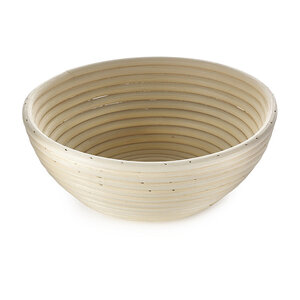I wasn’t sure if this would work - but I thought that as miso is fermented, maybe it will add a sour dough dimension. It turns out that it does. Its a subtle back taste and I’m intending to make more bread with miso and increase the amount of miso next time. The bread is straightforward - although I use a wet dough hand kneaded technique which is a bit tricky. You don’t need to. Just reduce the quantity of water so that the flour ‘just’ comes together. Then knead as normal. I reduced the usual amount of salt slightly as the miso is a bit salty.
I think you could add a tablespoon (or more?) of miso to almost any bread you usually make and it should work. So please give it a try. I’d love to know how it turns out.

Ingredients
200g rye flour
280g strong white bread flour
7g instant yeast
2 heaped tsp brown miso
8g salt
350ml warm water.
Vegetable oil
Method

I think you could add a tablespoon (or more?) of miso to almost any bread you usually make and it should work. So please give it a try. I’d love to know how it turns out.
Ingredients
200g rye flour
280g strong white bread flour
7g instant yeast
2 heaped tsp brown miso
8g salt
350ml warm water.
Vegetable oil
Method
- Place the flours in a large bowl. Add the salt to one side and the yeast to the other side.
- Dissolve the miso in the water and gradually add the water to the flour to form a fairly wet dough. Use less water for a ‘normal’ dough.
- Tip the dough onto an oiled surface and start by picking up the dough in one hand and slapping it back on the surface from a height. This is a messy process but if you repeat and repeat the dough will start to change and become less sticky.
- Use a metal dough cutter in your other (clean) hand to scoop the dough up from the surface each time. After about 5 minutes the dough should come together and loose its stickiness. At this point knead for a further 5 minutes in the normal way.
- If you have used less water and made a standard dough - knead as normal.
- Shape the dough into a ball and place in a floured banneton or tin. Leave to rise until doubled.
- If using a banneton, turn the dough onto a baking tray.
- Heat the oven to 180C.
- Bake for 35 to 40 mins.
Last edited:


